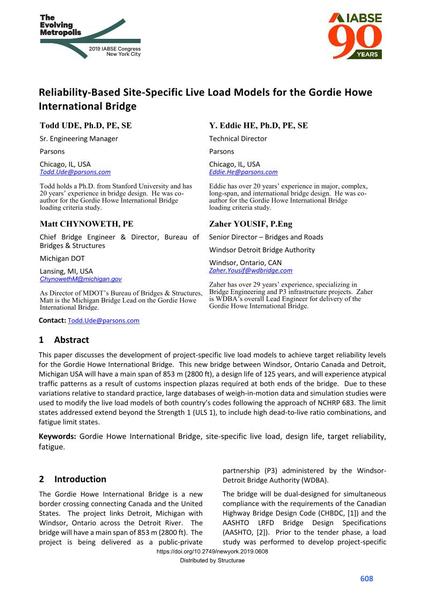Reliability-Based Site-Specific Live Load Models for the Gordie Howe International Bridge

|
|
|||||||||||
Détails bibliographiques
| Auteur(s): |
Todd Ude
(Parsons)
Y. Eddie He (Parsons) Matt Chynoweth (Michigan DOT) Zaher Yousif (Windsor Detroit Bridge Authority) |
||||
|---|---|---|---|---|---|
| Médium: | papier de conférence | ||||
| Langue(s): | anglais | ||||
| Conférence: | IABSE Congress: The Evolving Metropolis, New York, NY, USA, 4-6 September 2019 | ||||
| Publié dans: | The Evolving Metropolis | ||||
|
|||||
| Page(s): | 608-614 | ||||
| Nombre total de pages (du PDF): | 7 | ||||
| DOI: | 10.2749/newyork.2019.0608 | ||||
| Abstrait: |
This paper discusses the development of project-specific live load models to achieve target reliability levels for the Gordie Howe International Bridge. This new bridge between Windsor, Ontario Canada and Detroit, Michigan USA will have a main span of 853 m (2800 ft), a design life of 125 years, and will experience atypical traffic patterns as a result of customs inspection plazas required at both ends of the bridge. Due to these variations relative to standard practice, large databases of weigh-in-motion data and simulation studies were used to modify the live load models of both country’s codes following the approach of NCHRP 683. The limit states addressed extend beyond the Strength 1 (ULS 1), to include high dead-to-live ratio combinations, and fatigue limit states. |
||||
